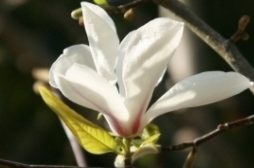どうなる?Brexit, Back Again?
16 December 2018 at 8:26am
Where do former UK prime ministers stand on the Brexit issue?

Theresa May has accused Tony Blair of “insulting” the British people and the office of prime minister by “undermining” Brexit talks with calls for a second referendum.
The Prime Minister said there are “too many people who want to subvert the process for their own political interests” and warned a second referendum would amount to Parliament abdicating responsibility.
After Mrs May’s stinging rebuke of her predecessor, here is a look at how former British prime ministers view Brexit:
David Cameron

Mrs May’s old boss triggered the referendum on Britain’s membership of the EU and campaigned for Remain.
After losing the historic vote, Mr Cameron swiftly left Number 10, quit as an MP and has remained virtually absent from the ensuing debate over Brexit.
Earlier this month, he said he did not regret calling the referendum, adding: “Obviously I’m very concerned about what’s happening today but I do support the Prime Minister in her efforts to try and have a close partnership with the European Union.”
Gordon Brown

Brexit has left the country divided and led to a breakdown of trust within the electorate, according to Mr Blair’s successor.
Furthermore, allegations of betrayal risk creating a “poisonous and toxic atmosphere” that could be exploited by populists.
In October, Mr Brown predicted a future referendum on Brexit will take place.
He said if Britain leaves the EU without a deal in March 2019 but with, as he expects, an extended transition period retaining some aspects of membership, the next general election will be fought on Europe.
Tony Blair

The Labour heavyweight drew Mrs May’s ire after saying the Prime Minister must stop “banging (her) head against this brick wall” and go for a second referendum.
He said the country had been “held hostage” by division in the Tories, but said the issue was such that it would not make any difference if it was a Labour or Conservative government “or a divine government” running the negotiations.
Mr Blair described the “disentangling” process of Brexit as “hideously complex” and said all options of leaving the EU have “significant drawbacks” compared with staying in.
Sir John Major

No stranger to the challenge posed to Tory leaders by Euroceptic MPs, Sir John has made several interventions on the issue.
As a former PM all too familiar with the realities of unrest in Northern Ireland, he has called for the immediate revocation of the Article 50 withdrawal process in order to give politicians on all sides time to work through the “morass”.
Sir John has also warned that Brexiteers responsible for persuading the British public to leave the European Union will never be forgiven for their “false promises”.Last updated Sun 16 Dec 2018

17 December 2018 at 10:19am
Theresa May invites David Cameron to backseat drive on Brexit
PESTON’S POLITICS ROBERT PESTON

If you want a symbol of the catastrophe Theresa May faces over Brexit here it is: her predecessor David Cameron is advising her how to get some kind route out of the EU – that isn’t the fast one over the cliff – through parliament.
This is like the pope asking the chief rabbi on the true meaning of the Eucharist: when Theresa May became prime minister she defined herself by defenestrating all things and people of a Cameroonish hue (including, most notoriously – and some would argue most self-destructively – packing Osborne off to the backbenches).
But now the former prime minister has become her personal Brexit-crisis adviser, as she desperately tries to prevent the UK crashing out of the EU with a chaotic no deal.

Mr Cameron’s advice is conspicuously being taken, at this juncture by her ministers if not publicly by her.
Because what he told her – I understand – is that she should “get on with getting parliament to work through the options”.
You will have heard the Business Secretary Greg Clark just this morning become the latest member of the Cabinet to say on the Today Programme that the time is almost nigh to press MPs (possibly through an innovative process of holding advisory votes on different options) to express their collective views on what kind of Brexit (or potentially no Brexit, via a referendum) they would choose.

Mr Cameron has made it clear – according to my source – that “she has to help parliament find an answer, recognising that she doesn’t have a majority”.
This of course is reinforcing the pressure on her from her senior backbenchers like Nicky Morgan to put party allegiances to one side in the search for a way through the impasse.
And what kind of Brexit would Mr Cameron himself favour?
Well she is listening to him partly because he has privately endorsed her “partnership” approach to the UK’s long-term relationship with the EU.
This would be either her Brexit plan, which a majority of MPs detest, or an amended version (which the EU comprehensively squished on Thursday) or some version of the arrangement Norway has with the EU.
So Mr Cameron is – as you would expect – a proponent of what Michael Gove would see as the best Brexit available and Jacob Rees-Mogg would view as BRINO (Brexit in name only) serfdom.
And if MPs won’t back any Brexit plan? Would Mr Cameron suggest she put the BIG question back to the people with a so-called People’s Vote?
My source conspicuously dodges when pressed.
That said, Mr Cameron probably knows better than to opine on plebiscitary matters, since if he hadn’t decided on the original poll, she wouldn’t be in her quandary today and he’d still be in a job.Last updated Mon 17 Dec 2018.























































 Sun 29 Jul 2018
Sun 29 Jul 2018 Alexandria Ocasio-Cortez at a rally in New York
Alexandria Ocasio-Cortez at a rally in New York Sat 12 Aug
Sat 12 Aug 





















